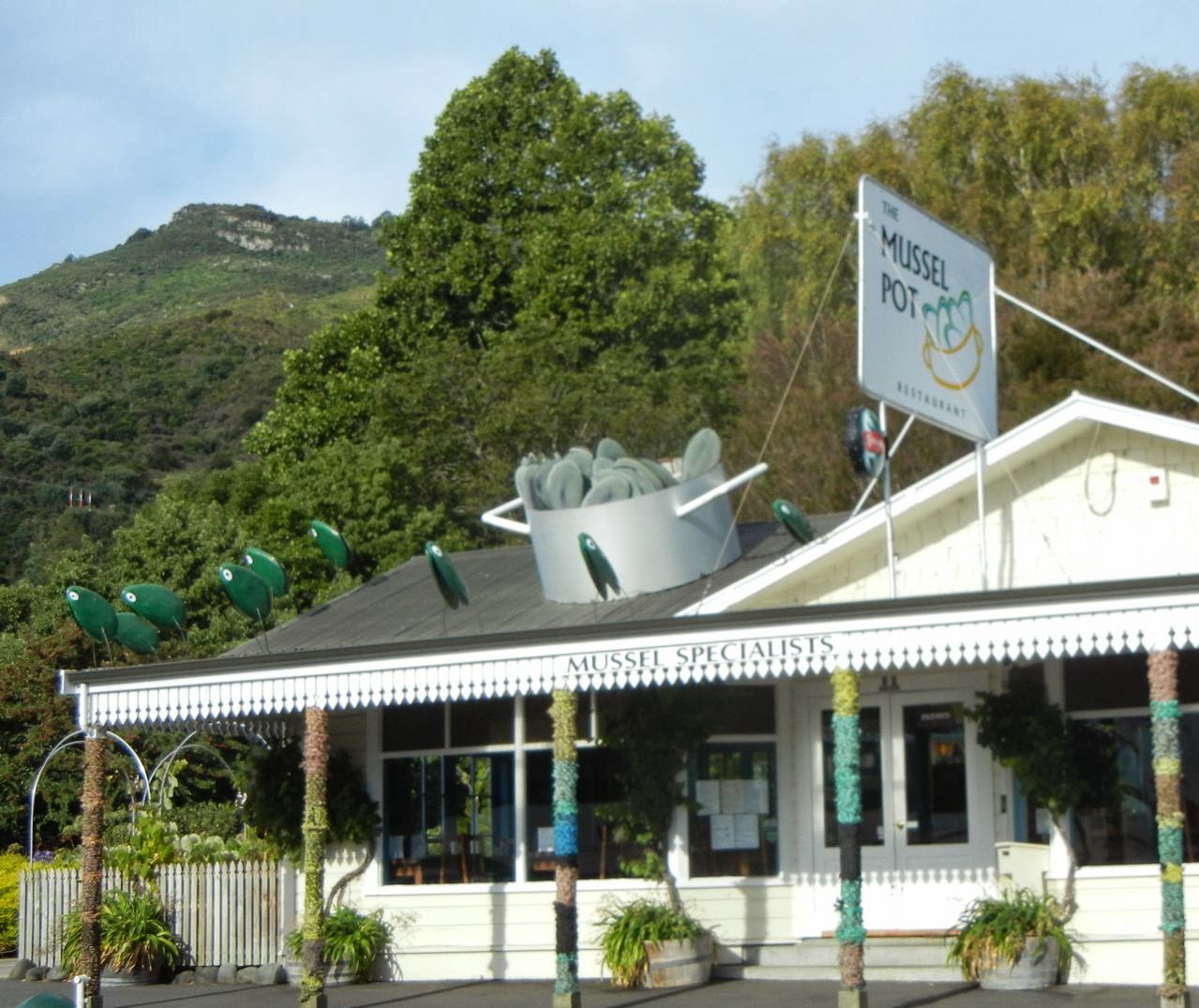Pilot and author Mark Vanhoenacker talks about “place lag,”
that dazed feeling of leaving a place in
the morning – its season, its architecture, its people, and touching down
halfway around the world in the evening in a new place with different light,
smells, language, perhaps even a different alphabet. Place lag seems a good way
to describe the way our brains and senses trot along, trying to catch up with
the technology that can transport us into an other culture within hours -- the
time it used to take us to travel to another town a state or two away.
I felt that place lag when I pushed the trolley stacked with
my suitcases out of the Auckland airport
terminal almost a month ago, walking straight into a New Zealand summer morning
still dressed in my Portland winter clothes. It was an effort to remember to
head to the left side of my friend’s car to strap myself into the dislocated passenger side. Later, after a long day of talking and
catching up, I realized that itself was another difference: a long day. I’d
flown out of the cave of long winter nights and landed in the expanse of early
sunrise and late sunsets.
So yes, some mild place lag. Not much jet lag, since there is only a 3 hour difference in the time of day
between here and Portland. I refuse to think about that matter of having lost
New Year’s Day somewhere over the Pacific because of the International Date
Line, since I choose to believe I’ll make up for what must be a bookkeeping
error when I return in February. After
all, my ticket insists, somewhat improbably, that I will arrive in the US
before I leave NZ.
But what I found when I landed in Tasmania a few weeks ago
was not place lag or jet lag, but a delicious sort of time lag. I landed in Hobart and quickly
discovered why Chris, the wonderful class organizer who arranged my workshop,
told me there would be no trouble finding each other when I disembarked: the entire airport is smaller than PDX’s
central merchant area, and still allows friends and family to accompany you to
your gate to hug you good-bye.
 |
| The softer side of modern airports |
We drove into a city where building cranes were
stacking up new high rises behind rows of convict-built buildings from the
1800’s and back to a pace of life I had found in New Zealand a quarter century
ago. Merchants assured me the amount of money I had in my hand was “close
enough” even though it was 20 or 50 cents short (honestly, I’m not that bad at
math --I’m just a slow learner when it comes to figuring out currency in a new
place). And maybe it was because Tasmania was still celebrating school
holidays, but I never encountered a rush hour in Hobart. Traffic was equally
thin elsewhere – as Bill and I drove around the state I think we saw more dead
wallabies and opossums along the road than we did cars.
 |
| Bill pacing off Nine Mile Beach |
We decided to take it slowly, so we only saw a small sliver
of Tasmania, and some of the landscape we saw was brown from drought or smoky
from lightning-strike fires. But some of what we saw was magical: empty white
sand beaches and rock formations eons in the making, granite and sandstone and
iron-flecked pillars that looked like sculptural installations.
 |
| Natural formation/art installation |
We drove through towns and visited a few museums which
illuminated a culture built by its colonial hegemony, convict history,
isolation, and other-ness. Every small town we stopped at still had bridges or
city halls built by convict labor, a fact that used to make Tasmanians cringe
but has now become a point of pride. There is MONA, a private art museum
started by a man who made his money out of a mastery of probability (aka a
gambler) and decided to build a museum of “old and new art” tunneled into the
earth of his middle class suburb and filled with art work reflecting his twin
obsessions of sex and death. A relatively new gallery in the publicly-owned Tasmanian
Museum provides a small place for aborigines to present their side of colonial
occupation in their own unequivocal words, calling it an “invasion…an attempted
genocide.”
 |
| The funhouse-mirrored entrance to the Museum of Old and New Art (MONA) |
In another gallery in the Tasmanian Museum I read this
placard explaining what the convicts who arrived in Tasmania found when they
arrived 200 years ago: “The swans were black, not white. The trees shed their
bark but kept their leaves. The seasons were reversed. European settlers in Van
Dieman’s land viewed the new world they encountered with amazement and wonder.
They called it ‘The Antipodes’ – the name means ‘direct opposite.” I imagined
the bedraggled transports tripping off their ships after the harrowing forced
voyage from Great Britain, shielding their eyes from the insistent sun,
blinking at these strange animals that hop and carry their babies in a pouch,
trying to take in this world they couldn’t have imagined and had never asked to
see. Maybe, I thought when I read this,
place lag isn’t such a new phenomenon.
 |
| Convict-built buildings on a Hobart wharf |







































